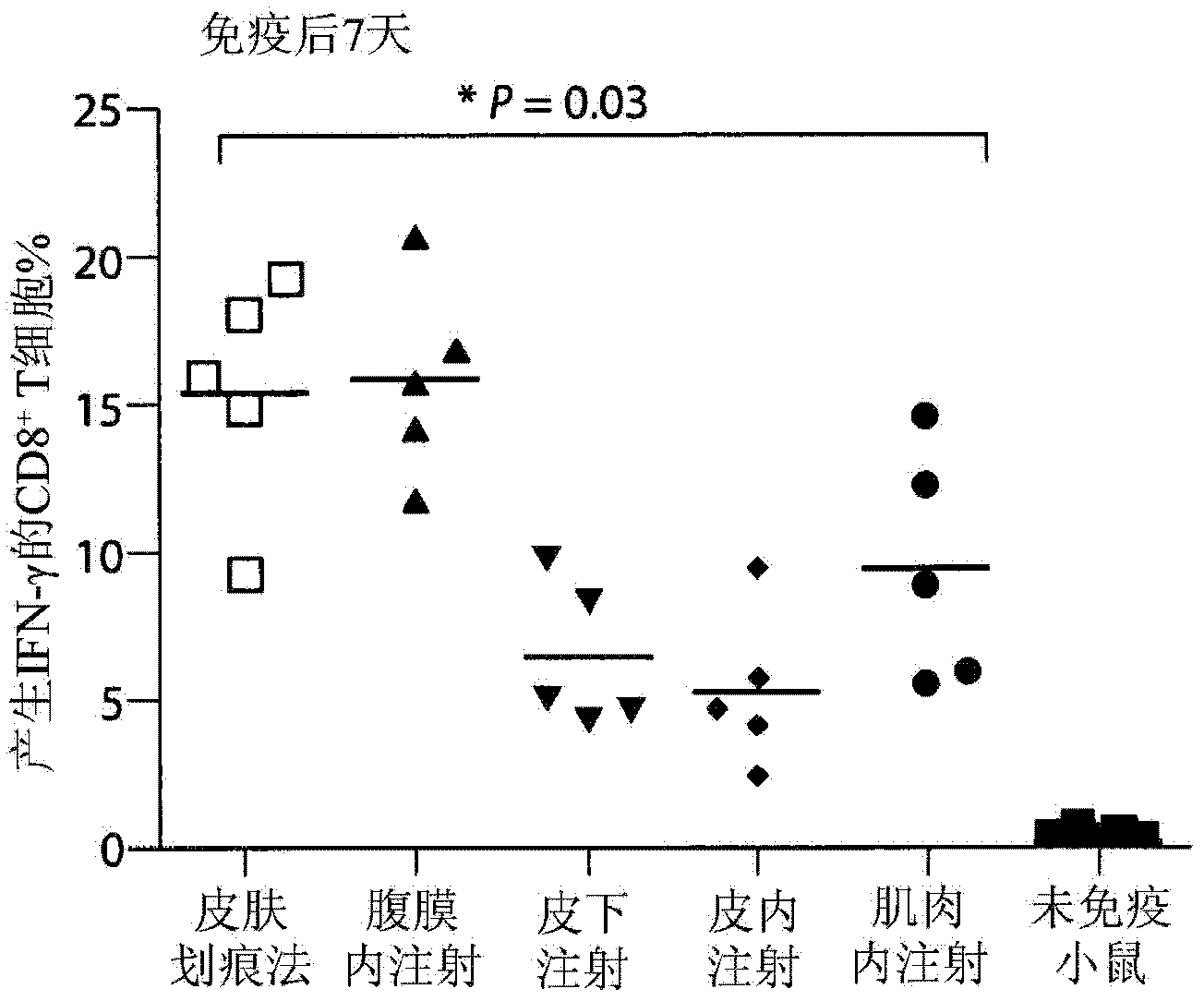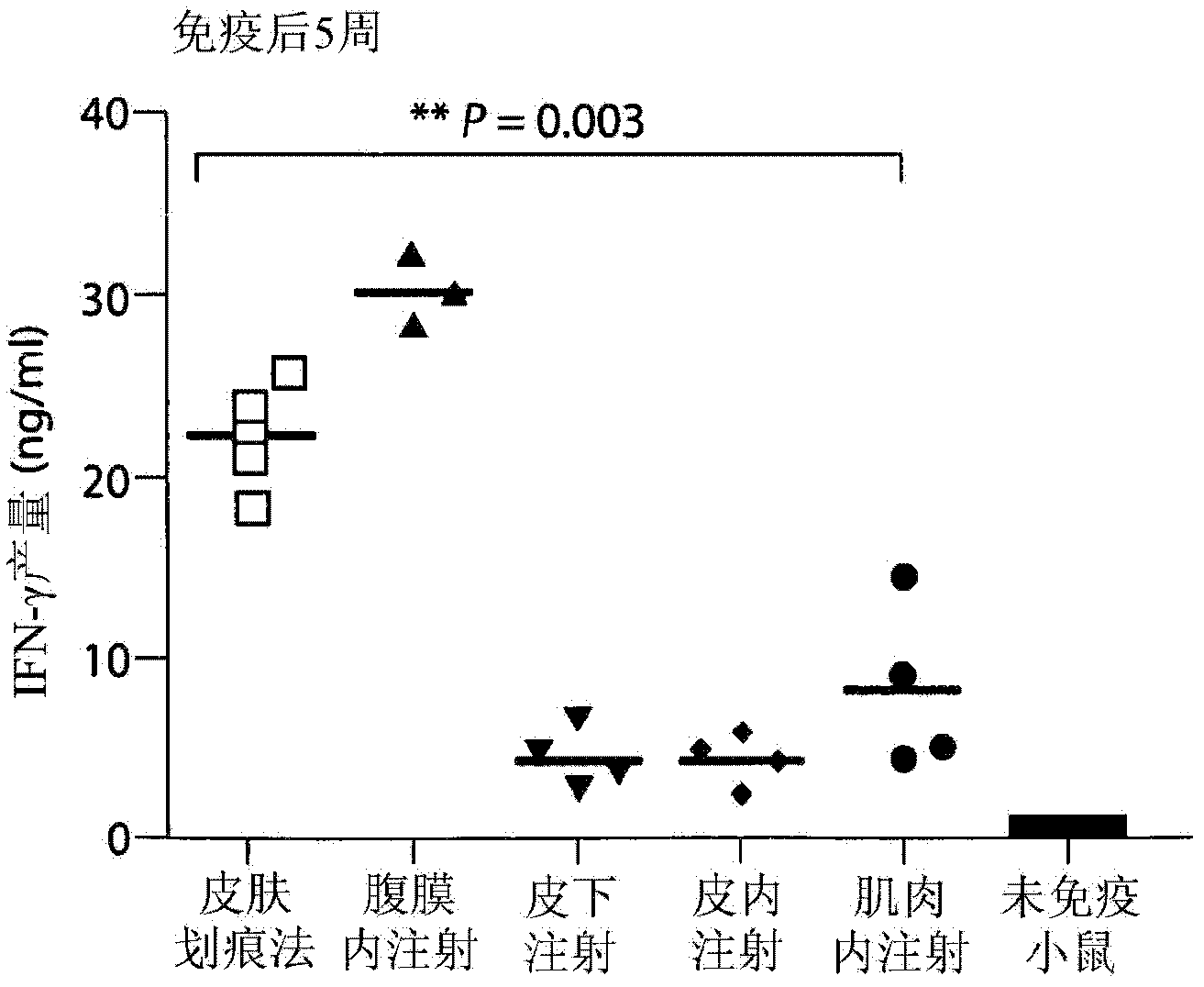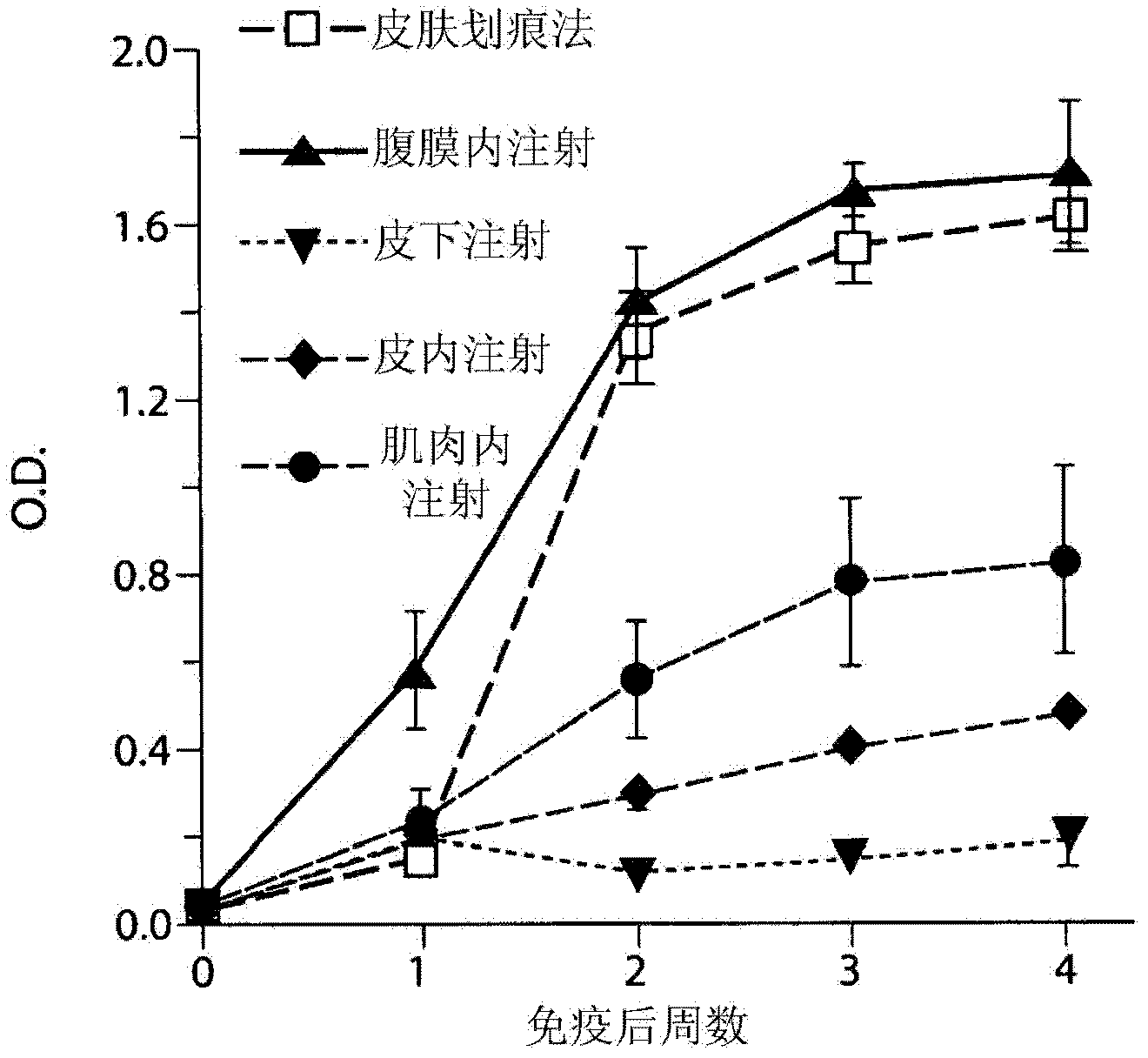Vaccination with poxvirus vectors by mechanical disruption of the epidermis
A mechanical destruction, pox virus technology, applied in the direction of virus/phage, virus, antiviral agent, etc., can solve the problem of ineffective production of CMI, etc.
- Summary
- Abstract
- Description
- Claims
- Application Information
AI Technical Summary
Problems solved by technology
Method used
Image
Examples
example 1
[0196] Example 1: Epidermal VV immunization via skin scarification will produce significantly stronger cellular and humoral immunity than the conventional injection route.
[0197] Generate VV skin scratch method mouse model. The acute epidermal pox response in scratched mice is very similar to that of the human smallpox vaccine. Using this model, a rigorous comparison of primary and memory adaptive immunity following vaccinia virus (VV) immunization by skin scarification (s.s.), subcutaneous (s.c), intradermal (i.d.) and intramuscular (i.m.) injection answer. The highly immunogenic intraperitoneal (i.p.) route of injection, although not used in clinical immunization, was included as a positive control for VV-specific immune responses. Compared with conventional injection routes (s.c, i.d., and i.m.), VV skin scarification induced significantly stronger primary and memory T cell responses, as well as higher serum VV-specific IgG levels (Fig. 1). Long-term T cell memory and ...
example 2
[0198] Example 2: VV skin scratch method provides excellent protection against secondary antigen challenge.
[0199] This example uses three different models to determine whether VV skin scarification provides superior protection against secondary challenge. The first challenge model was cutaneous poxvirus infection (transcutaneous infection). This model was chosen for two reasons. First, the protective efficacy of smallpox vaccine candidates was evaluated clinically by challenging vaccinated individuals with Dryvax skin scarification. Second, natural poxvirus infection can be acquired through exposure of the skin, especially damaged skin areas, to the virus. Following skin challenge, skin viral load was determined using VV-specific real-time PCR ( figure 2 ). Mice immunized with s.c, i.d., and i.m. injections all showed partial protection, showing 15, 9.5, and 3-fold reductions in viral load, respectively, compared to unimmunized control mice. In i.p. immunized mice, a ...
example 3
[0202] Example 3: VV skin scratch-associated protection against secondary challenge requires memory T cells but not Ab.
[0203] To investigate the mechanisms underlying the superior protective efficacy following poxvirus skin scarification, the relative contributions of humoral and cellular responses in skin scarification-associated immune protection will be investigated. Wild-type (wt) and B cell-deficient μMT mice were immunized with VV via skin scarification or i.p. injection, the two most immunogenic routes in this study. Subsequently, memory mice were challenged by secondary skin or intranasal poxvirus infection. As shown in Figure 5a, i.p. immunized μMT mice had a 4-log higher viral load than i.p. immunized wild-type mice when challenged with VV on the skin. Interestingly, μMT mice immunized via the s.s. route still showed strong protection against skin challenge, with viral loads comparable to wild-type mice immunized via skin scarification. However, when T cells wer...
PUM
| Property | Measurement | Unit |
|---|---|---|
| length | aaaaa | aaaaa |
Abstract
Description
Claims
Application Information
 Login to View More
Login to View More - R&D
- Intellectual Property
- Life Sciences
- Materials
- Tech Scout
- Unparalleled Data Quality
- Higher Quality Content
- 60% Fewer Hallucinations
Browse by: Latest US Patents, China's latest patents, Technical Efficacy Thesaurus, Application Domain, Technology Topic, Popular Technical Reports.
© 2025 PatSnap. All rights reserved.Legal|Privacy policy|Modern Slavery Act Transparency Statement|Sitemap|About US| Contact US: help@patsnap.com



